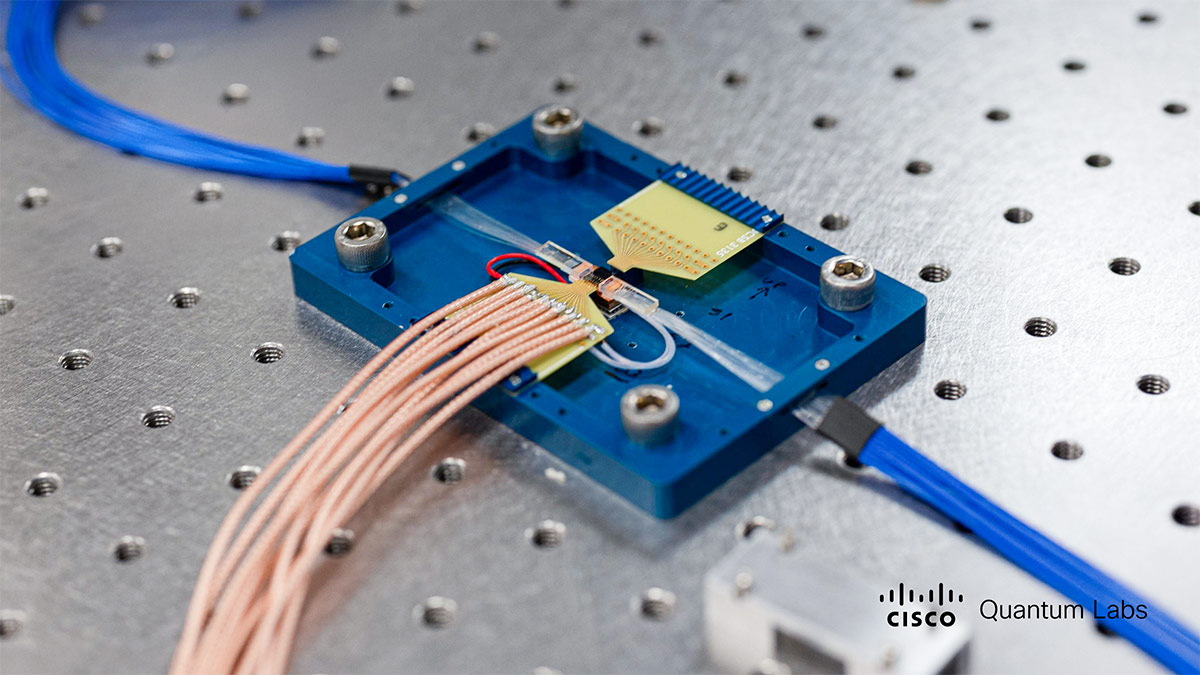Visit a modern factory floor and you’ll see a hive of high-tech activity, as data-empowered workers manage dazzling arrays of precisely calibrated industrial machines.
It’s a testament to the power of digital technologies to transform an entire industry. Yet it’s only the beginning of what’s to come for manufacturing.
From AI and the Internet of Things to 3D printing and robotics, emerging technologies promise to drive Industry 4.0 to its fullest potential.
However, for those technologies to enable a more productive, sustainable, and flexible future, the Internet itself will need to evolve — especially for high-speed, low-latency wireless connections. That’s where 5G and WiFi 6 come in.
“Right now, the automation environment in the factory is a very wired environment," said Todd Gurela, chief technology officer for Cisco's Industry Solutions Group. "That’s fine as long as the factory never has to flex production or migrate to doing different types of production.”
The future of factories — it's flexible
A core goal of industry 4.0 is flexible, customized production — in a factory that could potentially deliver a “batch size of one,” explained Chantal Polsonetti, vice president of Advisory Services for ARC Advisory.
“Objectives include production flexibility, as well as the associated speed and ease of configuration and reconfiguration,” she said. “Some production architectures in discrete manufacturing, particularly automotive, are moving toward a smart-conveyance scenario where mobile AGVs [automated guided vehicles], conveyors, carts, robots, etc., are moving around flexible, layout-free production facilities.”
In effect, robots will travel to the parts or products, instead of the other way around. “Rigid, wireline network infrastructures of the current and past can’t meet the requirements of that type of scenario,” Polsonetti added.
A key driver of that new factory paradigm? Consumer demand, said David Vasko, director of advanced technologies at Rockwell Automation.
“Automotive is an example,” he said. “You’re going to see increased demand for flexibility. The days of spending two years of planning, those are all gone. You need to be much more flexible than that, to see what the customers want and actually provide those products.”
“The flexibility in these wireless technologies,” he continued, “will help enable it.”
See also: How 5G Will Accelerate Industrial IoT
Next-gen wireless enters the manufacturing picture
By 2025, the number of connected IoT devices is expected to exceed 41 billion globally, and the majority of those will be wirelessly connected. For Industrial IoT, the vast increase in machine-to-machine and machine-to-human data will demand rock-solid wireless solutions.
“When you look at the future of manufacturing, you look at generating a high density of data,” said Dr. Jay Lee, a professor of advanced manufacturing at the University of Cincinnati. “With 5G there’s a certain benefits criteria, which would be low latency and 20 times the speed. WiFi 6 also has a unique way to connect many things.”
In the next few years, the greater capacity of both technologies will be essentiall as the next generation of industrial devices and processes arrive, explained Stephen Goodman, a Cisco business development architect.
“Historically on the plant floor, the types of devices that we’ve seen connected have been relatively low data rate, relatively low-speed devices,” he said “That’s changing as we move forward. We are going to get to a point where existing WiFi 5 technology is not going to be man enough for the job.”
With all that added complexity, it’s harder than ever to know just what’s happening in a factory. Next-gen wireless will enable a much deeper visibility into manufacturing processes, no matter how fast the factory is moving.
“In high-speed applications,” said Lee, “you need continuous process management systems. Espeically for high-speed assembly, high-speed weldings, 3D printing, or a high-speed roll-to-roll process. In those areas certainly, [5G and WiFi 6] can play extremely well in manufacturing.”
Two cutting-edge solutions, each with unique strengths
WiFi 6 and 5G each excel in different ways, and manufacturers will need to decide which solution suits them best. Generally speaking, WiFi 6 will cover indoor situations while 5G, with its longer range between access points, will take on the outdoor connections. But there will be exceptions.
“5G is really good at high bandwidth, it’s good at low latency and performance overall,” said Gurela. “But what it has challenged us with is penetration. These manufacturing facilities have a lot of metal structure, a lot of machines, a lot of challenges to really ensure that we can get the wireless signal to where it needs to be. So WiFi 6, right now, the characteristics of the radio itself has better penetration capabilities.”
In some instances, WiFi 6 will offer cost benefits and better control of the network.
“The enterprises themselves want to be able to manage that network, ensure security, and ensure who’s on that network with them," said Gurela. “If you look at a service provider’s 5G, that’s a public domain.”
Other manufacturers may opt to build private 5G networks for their in-factory applications. Volkswagen, for example, acquired unused spectrum from the German government for 5G in some European plants.
In other situations, 5G will thrive with or without a private network. “There are 5G applications where you are going to be using just the service provider,” explained Vasko. “Applications like mining, or oil and gas, where you have large geographic areas and you’re trying to collect data.”
Ultimately, the real strength may lie in the synergy between the two technologies, enabled by open-roaming.
“There’s going to be an interaction between 5G over say a broader manufacturing campus,” added Gurela. “And then WiFi 6 within the four walls of the actual factory. We’ll see a combination of those things.”
See also: Next-gen wireless: the platform for tomorrow’s smart cities
Fast factories, empowered workers, unlimited possibilities
Next-gen wireless is poised to connect critical applications in factories, while simplifying the management of the most complex systems.
“Wireless, to date,” Polsonetti said, “has not been used in mission-critical applications in industry to any great extent. But now, between the technology and the management tools and the IOT, we envision that it’s all going to be able to be brought under one universal management umbrella.”
Plant safety is one area where reliability and speed can mean life or death.
Latency, Goodman stressed, is not a big issue for less critical applications “but if it’s, say, a safety curtain sending an emergency shutdown message to a piece of equipment, that’s not good. You've probably killed someone by that point.”
“No one at the moment,” he continued, “would want to use wireless for safety applications, because it's just not deterministic enough for their needs. That’s going to change in the future.”
Outside the plant, 5g opens up enhanced possibilities for connected products, predictive maintenance, and precise visibility into supply chains (especially when combined with solutions like blockchain).
“5G is the perfect technology for doing product traceability right across the globe," said Goodman, "shipping, tracking, being able to really speed up some of the just-in-time processes that we see ... so they know exactly where they are in transit.”
Blockchain, in concert with 5G and AI, could also confirm that parts are produced sustainably, and by people working under humane conditions.
In a 5G world, visibility would extend to products once they leave the factory, by fully enabling solutions like predictive maintenance. An automobile, construction vehicle, or industrial machine, for example, could relay huge amounts of data back to manufacturers, parts suppliers, or repair shops — before big problems arise.
On a factory floor, in particular, predictive maintenance cuts downtime dramatically. “When something breaks,” said Vasko, “it’s just so costly for most manufacturers to get it going again. That’s the one that has huge benefits right off, where we’ll see the biggest impact.”
Similar benefits will extend to consumers.
“Vehicles would have continuous, reliable, secure, high-bandwidth coverage,” said Shaun Kirby, head of connected car product development at Cisco. “They would always be communicating relevant information to their manufacturers, to the ecosystem, whether it’s insurers or auto repair agencies or suppliers.”
Such outcomes show the true potential of 5G and WiFi 6. By connecting people, machines, and data in ever-better ways they represent the next wave of the Internet — while contributing to a future that's greener, more efficient, and highly innovative.
“We’re really excited about where these technologies are going,” concluded Vasko. “I’ve been installing smart manufacturing systems for a couple of decades, but we’ve been somewhat hampered by the speed of the communications. Today we’re able to realize the visions we’ve had in the past.”
###
We welcome the re-use, republication, and distribution of "The Network" content. Please credit us with the following information: Used with the permission of http://thenetwork.cisco.com/.




